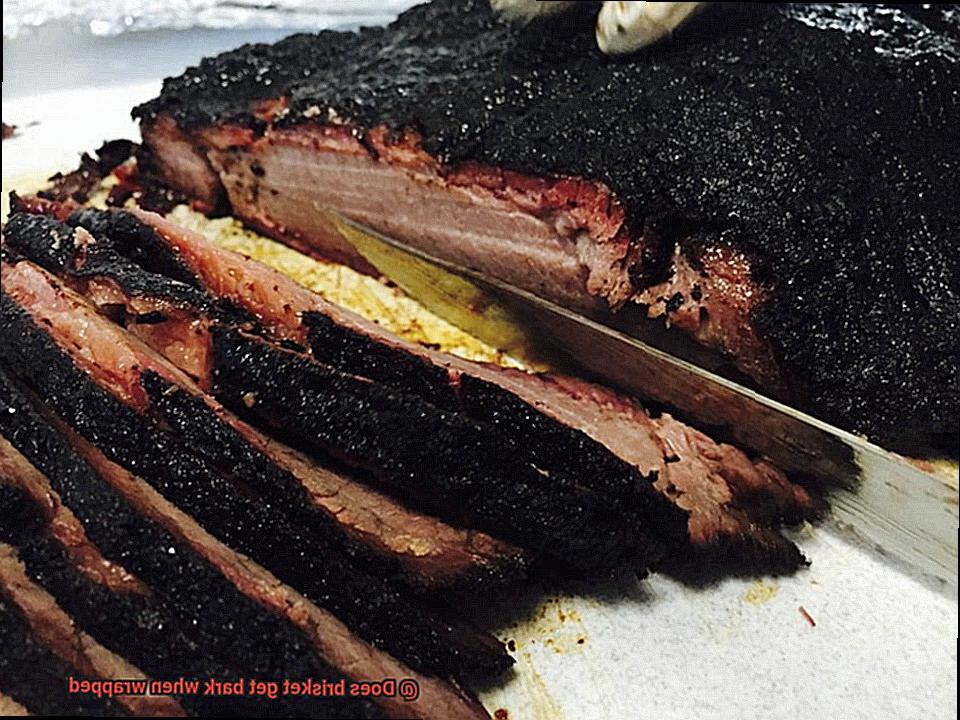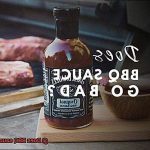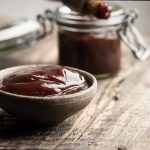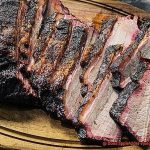Imagine the mouthwatering aroma of a brisket smoking for hours, filling your senses with anticipation. You’re eager to sink your teeth into that juicy, tender, and flavorful meat. But now comes the tough decision: should you wrap your brisket or let it cook unwrapped?
Wrapping brisket is a popular technique among pitmasters and BBQ enthusiasts alike. By wrapping your brisket in foil or butcher paper, you create a barrier that seals in moisture and heat. This method helps to tenderize the meat and creates a beautiful bark on its surface.
However, here’s the million-dollar question: Does brisket get bark when wrapped? The BBQ community has long debated this issue, with varying opinions that can leave you feeling confused and uncertain about what to do.
In this blog post, we’ll delve deeper into this topic, exploring the pros and cons of wrapping your brisket while attempting to provide clarity on whether you can still achieve an outstanding bark while wrapping. Are you ready to learn more about this intriguing topic? Let’s dive in.
Contents
Why is Bark Important for Brisket?
It’s the crispy, caramelized crust that forms on the exterior during smoking and signals that your brisket is on its way to becoming a masterpiece.
But why is bark so crucial? For starters, it provides a rich, smoky flavor that complements the tender meat inside. This flavor is the result of the Maillard reaction – a chemical reaction between amino acids and reducing sugars that creates complex molecules and gives the meat its distinct taste and texture.
In addition to flavor, the bark also adds a satisfying crunch to every bite. This contrast in texture with the soft interior makes every mouthful an adventure for your taste buds.
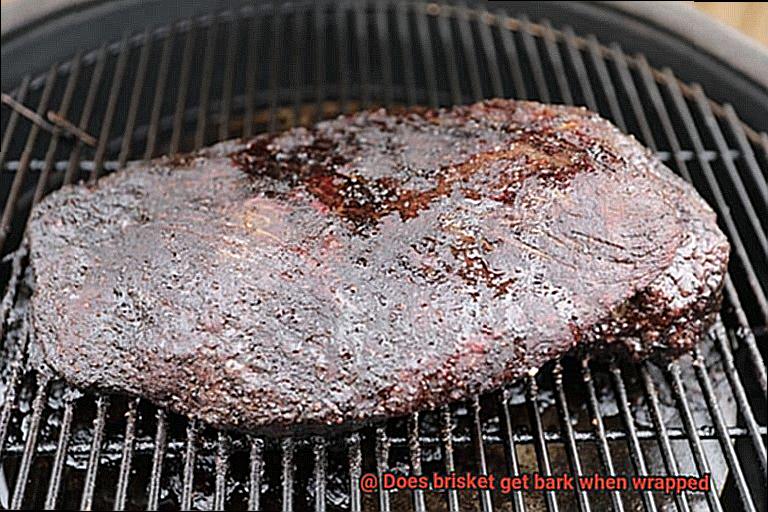
Now, let’s talk about wrapping. The age-old debate of whether to wrap or not to wrap has left many pitmasters scratching their heads. Some swear by wrapping in foil or butcher paper to retain moisture and enhance flavor, while others believe it interrupts bark formation.
The truth lies somewhere in between. Wrapping can indeed help create a more consistent bark by preventing the meat from drying out too quickly. However, it’s essential to wrap at the right time and remove it during the last hour of cooking to allow the bark to firm up properly.
Using butcher paper instead of foil can also help create a better bark by allowing more smoke and moisture to penetrate the meat. Regardless of which method you choose, experimenting with different techniques will help you find what works best for you and your taste buds.
Does Wrapping Brisket Prevent Bark?
As a pitmaster, you know that the perfect bark on a brisket is what makes it stand out from the rest. But, does wrapping brisket prevent the development of this coveted crust? The answer is both yes and no.
Wrapping brisket in foil or butcher paper has its advantages – it can retain moisture and speed up the cooking process, resulting in a tender and juicy brisket. However, the downside is that the bark may not be as crispy or thick as it would be if left unwrapped.
The reason for this is that wrapping essentially steams the brisket in its own juices, creating a moist environment that can soften the outer layer of meat. Additionally, the wrapping material can absorb some of the flavorful rub and smoke, further reducing the intensity of the bark.
But wait. There are ways to still achieve a decent bark even when wrapping brisket. Here are some tips:
- Unwrap during the last hour: Unwrapping the brisket during the last hour or so of smoking allows the exterior to dry out and form a crust.
- Use a more robust rub: A rub with higher sugar content can help create a caramelized exterior even when wrapped.
Ultimately, whether or not to wrap brisket depends on your personal preference and cooking goals. If you prioritize a tender and juicy end product, then wrapping may be necessary. However, if you want a thick and crispy bark, then leaving it unwrapped may be your best bet.
Pros of wrapping include retaining moisture, speeding up cooking time, and creating a consistent bark. Cons include softening the bark, reducing rub and smoke intensity, and preventing a thick crust from forming.
Benefits of Wrapping Brisket to Create a Better Bark
As a pitmaster, you know that the bark on your brisket is the key to unlocking a flavorful and juicy end product. But how do you achieve that perfect bark? Wrapping your brisket in foil or butcher paper may be the solution you’ve been searching for.
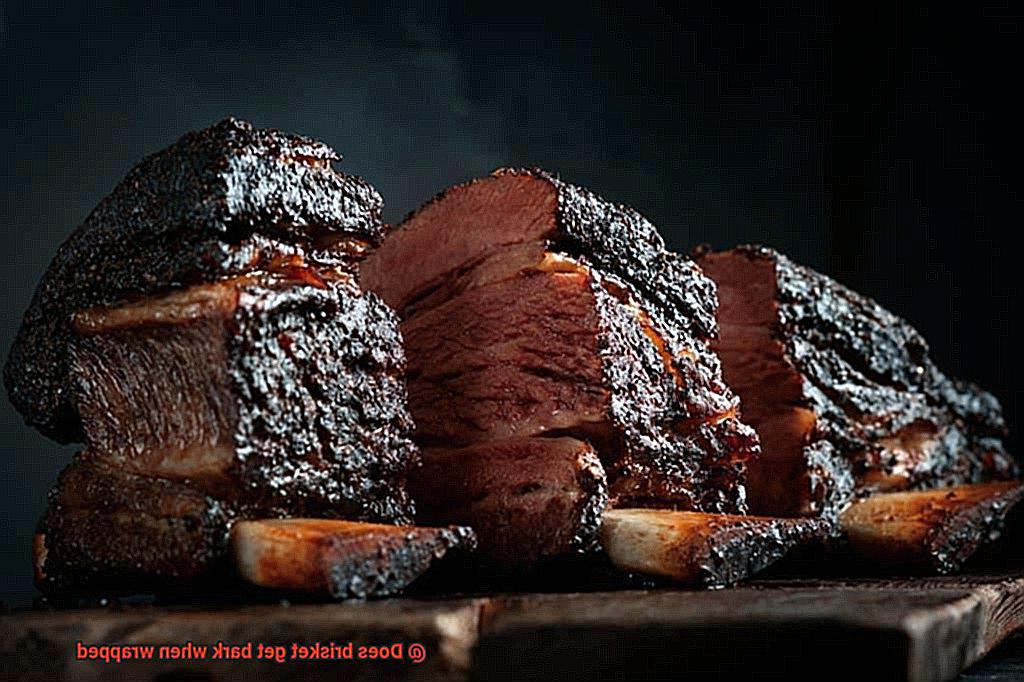
One of the main benefits of wrapping your brisket is moisture retention. The meat naturally releases moisture as it cooks, but without wrapping, this moisture can evaporate and leave your brisket dry and tough. By wrapping it up, the moisture is trapped and recirculated within the foil or paper, keeping your brisket tender and juicy throughout the cooking process.
Additionally, wrapping your brisket can speed up the cooking process. When exposed to high heat for too long, the meat can dry out and become difficult to chew. However, by wrapping your brisket, it creates a steamy environment that helps to break down connective tissue and collagen within the meat resulting in a more tender and moist final product in less time.
Another benefit of wrapping your brisket is the creation of a consistent bark throughout the entire cut of meat. When left unwrapped, hot spots within the smoker can cause uneven charring or burning of certain areas of the brisket. Wrapping ensures that all sides of the brisket are evenly exposed to smoke and heat, resulting in an even and consistent bark.
It’s important to note that while wrapping can help create a better bark on your brisket, it’s not necessary for every cook or every pitmaster’s preference. Some prefer to leave their brisket unwrapped for a smokier flavor and more robust bark. Ultimately, it comes down to personal preference and experimenting with different techniques to find what works best for you.
When Should You Wrap Brisket for the Best Bark?
When it comes to smoking brisket, achieving the perfect bark is crucial for a mouthwatering and flavorful result. The bark is that crispy outer layer that forms on the meat during the smoking process and is packed with flavor. But the big question remains: when should you wrap your brisket for the best bark?
Wrapping your brisket involves wrapping it in foil or butcher paper during smoking, usually around the halfway point. While some pitmasters believe that wrapping can cause the bark to soften or disappear entirely, others argue that it can enhance the bark and create a more pronounced flavor.
Unwrapped Brisket
If you prefer a thick and crunchy bark, then leaving your brisket unwrapped for as long as possible is the way to go. This method allows the smoke to penetrate the meat and form that coveted crust on the outside. However, patience is key, as it can take a while for the bark to develop.
Wrapped Brisket
Wrapping your brisket can be beneficial if you’re worried about it drying out or if you prefer a softer bark. Wrapping helps to trap moisture inside the meat, resulting in a more tender brisket. Additionally, wrapping can enhance the flavor by allowing beef juices to mingle with any added seasoning or marinade. Be cautious, though; wrapping for too long can cause the bark to soften or disappear entirely.
So when is the best time to wrap your brisket? It all comes down to personal preference and experimentation. There’s no one-size-fits-all approach to smoking brisket, and what works for one pitmaster may not work for another. To help you decide which method you prefer, here are some tips:
- If you want a thick and crunchy bark, leave your brisket unwrapped for as long as possible.
- If you’re worried about your brisket drying out, wrap it when it’s about halfway through the cooking process.
- If you want to enhance the flavor and tenderness of your brisket, wrap it for a shorter period of time.
What Type of Paper Should You Use for Wrapping Brisket?
As a seasoned pitmaster, I’m often queried about the best way to wrap brisket. Wrapping is a crucial step in the smoking process that helps keep the meat moist and tender. However, it’s also a make-or-break moment for the bark – the flavorful crust that forms on the surface of the brisket. So, what type of paper should you use to wrap your brisket, and how does each option impact the final result?
First off, let’s consider butcher paper – a food-grade material that allows the brisket to breathe while retaining moisture. Butcher paper is porous, which means that air can circulate around the meat, allowing it to smoke and develop a gorgeous bark. Furthermore, it’s less prone to sticking to the meat than foil, making it easier to unwrap without losing any of that prized crust.
On the other hand, aluminum foil provides a tighter seal around the meat, trapping in moisture and creating a steaming effect. This can help keep your brisket juicy and tender, but it can also lead to a softer bark due to limited airflow.
So which type of paper is best for your brisket? Ultimately, it depends on your personal preference and desired outcome. Do you crave a thick and crunchy bark? Then butcher paper may be your go-to choice. Or do you prefer a softer bark with a tender texture? In that case, aluminum foil might be a better bet.
It’s worth noting that regardless of which type of paper you select, make sure it’s food-grade and safe for cooking purposes. Avoid using regular newspaper or parchment paper as these may contain harmful chemicals that can leach into your food.
How Long Should You Wrap Brisket For?
Getting to that point can be a bit of a journey, and one of the most critical decisions you’ll have to make along the way is when and how long to wrap your brisket.
Wrapping brisket is an essential step in achieving that melt-in-your-mouth tenderness we all crave. It can help speed up the cooking process by trapping in moisture and heat, which is particularly helpful if you’re cooking a larger or tougher piece of meat. It can also prevent the meat from drying out during a long cook.
But how long should you actually keep your brisket wrapped? There’s no one-size-fits-all answer, as it largely depends on your preferred texture of the finished product. Here are some factors to consider:
- Type of wrap: Different types of wrap can affect the texture of your brisket. For example, aluminum foil creates a steaming effect, leading to a softer texture, while butcher paper allows for better airflow and a thicker bark. Keep this in mind when deciding how long to wrap your brisket.
- Desired level of tenderness: If you want your brisket to fall apart at the slightest touch, you’ll likely want to keep it wrapped for a longer period of time. But if you prefer some chewiness to your meat, you may want to limit the wrapping time.
- Bark preference: The longer you keep your brisket wrapped, the softer the bark will become. If you’re looking for that crispy exterior, you may want to limit wrapping time or even unwrap the brisket for the last half hour or so of cooking.
A general rule of thumb is to start wrapping your brisket when it reaches an internal temperature of around 160-170°F. From there, you can either continue cooking without wrapping until it reaches your desired level of doneness, or keep it wrapped until it hits around 195-205°F.
However, it’s worth noting that wrapping for too long can result in a softer bark. Some pitmasters even suggest unwrapping the brisket for the last half hour or so of cooking to help re-crisp the bark. Ultimately, the amount of time you wrap your brisket for will depend on your personal preferences and cooking style.
Tips for Removing the Wrap at the Right Time
Here are five tips to help you determine the timing and achieve the perfect bark.
Use a Meat Thermometer
One of the best ways to gauge when to remove the wrap is by using a meat thermometer. Once the internal temperature of your brisket reaches around 160-170°F, it’s time to start monitoring the bark. You can either remove the wrap completely or partially to allow some moisture to escape and let the bark form.
Perform a Squeeze Test
Another method to determine when to remove the wrap is by performing a “squeeze test.” Gently squeeze your brisket with a pair of tongs and feel for resistance. If it feels firm and springy, your brisket is likely ready to come out of the wrap. But if it still feels soft and spongy, leave it in for a bit longer.
Keep an Eye on Your Brisket
It’s essential to keep in mind that every brisket is different and may require slightly different timing for removing the wrap. Factors like size, cooking temperature, and humidity can all affect how quickly the bark forms. So keep an eye on your brisket throughout the cooking process and adjust as needed.
Try Butcher Paper
Butcher paper can be a great alternative to foil when wrapping your brisket because it allows more smoke and moisture to penetrate the meat, which can help create a better bark. And don’t forget to remove the wrap during the last hour or so of cooking to allow the bark to firm up and develop further.
Use Your Senses
Sometimes, relying on your senses can be just as effective as using a thermometer or performing a squeeze test. Take a peek at your brisket and see if it looks dry on the surface. If it does, it’s likely time to remove the wrap and let it continue cooking uncovered. You can also touch the surface of the brisket with your finger – if it feels sticky or tacky, that’s a sign that bark has started to form.
Conclusion
In conclusion, the age-old debate of whether or not to wrap your brisket during cooking has a significant impact on bark formation. Some experts swear by wrapping as a means of retaining moisture and speeding up cooking time, while others argue that it can soften or even eliminate the bark altogether. However, finding the perfect balance is key.
Butcher paper is an excellent alternative to foil when it comes to wrapping your brisket. It allows more smoke and moisture to penetrate the meat while still retaining moisture. Unwrapping during the last hour of cooking can help firm up the bark and create a better texture, resulting in a mouthwatering end product.
Ultimately, deciding whether or not to wrap your brisket depends on your personal preference and desired outcome. If you’re after a tender and juicy final product, then wrapping may be necessary. However, if you prefer a thick and crispy bark that packs a punch of flavor, then leaving it unwrapped may be your best bet.
Experimenting with different techniques will help you discover what works best for you and your taste buds. Remember to use a meat thermometer or perform a squeeze test to determine when to remove the wrap. Keep an eye on your brisket throughout the cooking process and trust your senses when making decisions about bark formation.
With these tips in mind, achieving mouthwatering brisket with the perfect bark every time is within reach.

